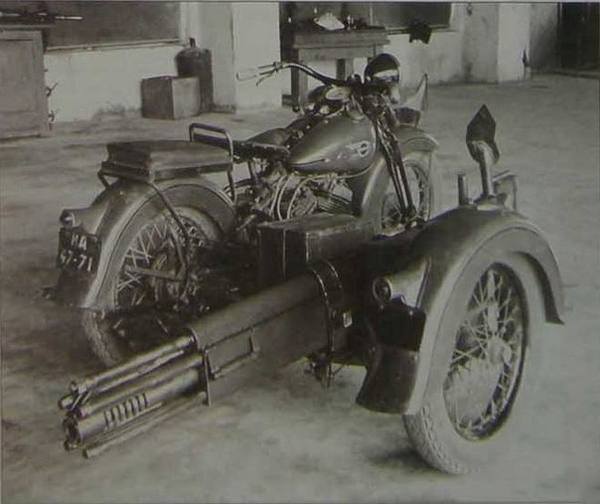The Russians Bring Out The Big Guns
Ever since the first motorcycle was invented, militaries around the world have been looking for ways to convert them to mobile gun platforms. The first documented case of a Harley-Davidson motorcycle being used for this type of duty was during the Pershing Expedition in 1916, when the US Army was sent to Mexico to capture Pancho Villa. During this campaign, machine guns were mounted on modified sidecars which showed some potential for future battlefield use. Tests and prototypes continued at least until WWII, but there was never a truly successful combination that saw extensive use in combat. On the other side of the globe, the Russians were running their own tests with Harley-Davidson motorcycles and perhaps the most impressive was the mounting of a recoilless 37mm cannon on an HD flathead.
Initially the motorcycle was just used as a means to transport a CHKSH-1 37mm anti-tank gun. The gun could not be fired from the motorcycle and had to be removed and assembled once reaching it’s destination. This obviously was a slow process and not inline with the tactics the Russians had in mind for a mobile anti-tank unit. Plus the gun didn’t perform as expected, so it was back to the drawing board.
For the next trial, the gun was redesigned and mounted to a sidecar style frame attached to the motorcycle. This new setup allowed for a gunner to ride behind the anti-tank gun which could then be fired at speeds of 10km on level ground. Gun crews were made up of 6 men, so two motorcycles were needed. The first motorcycle carried the gun, also carried a driver, the gunner and the loader. The second carried a driver, the commander and a porter. I assume this second motorcycle also carried additional ammunition.
To truly make this a mobile weapon system, it was also designed to be dropped from an aircraft allowing it be deployed behind enemy lines. For this operation, the motorcycles and gun were mounted externally under an LI-2 (a Russian licensed DC-2) and then dropped via parachute over the target zone. Ammunition and soldiers parachuted separately as you would expect.
Testing of this new gun platform ended in 1944, so it is likely that they never were used during WWII. Still, records indicate that 472 of the 37mm anti-tank guns designed with this platform were produced from ’44 to ’45, so you never know.


